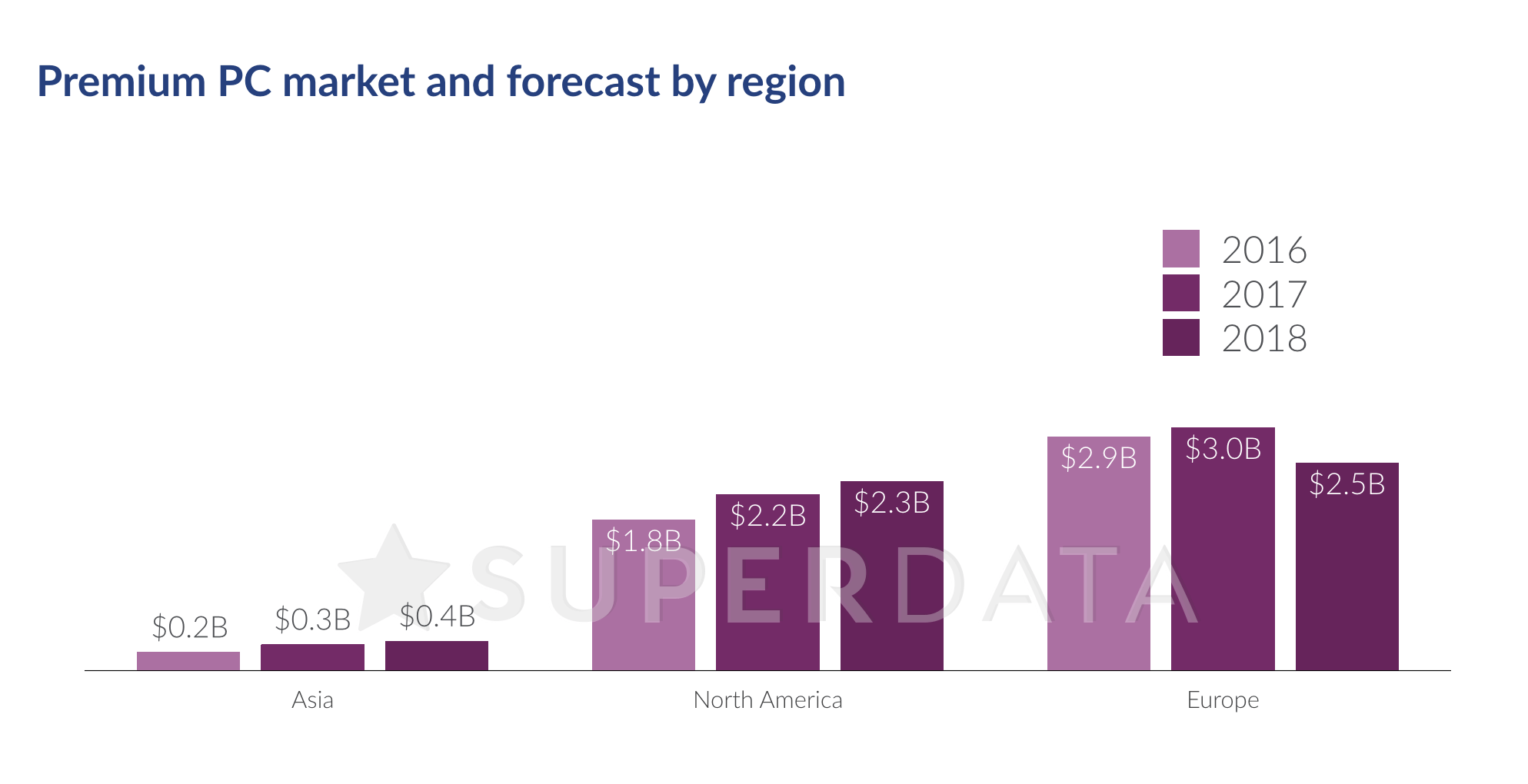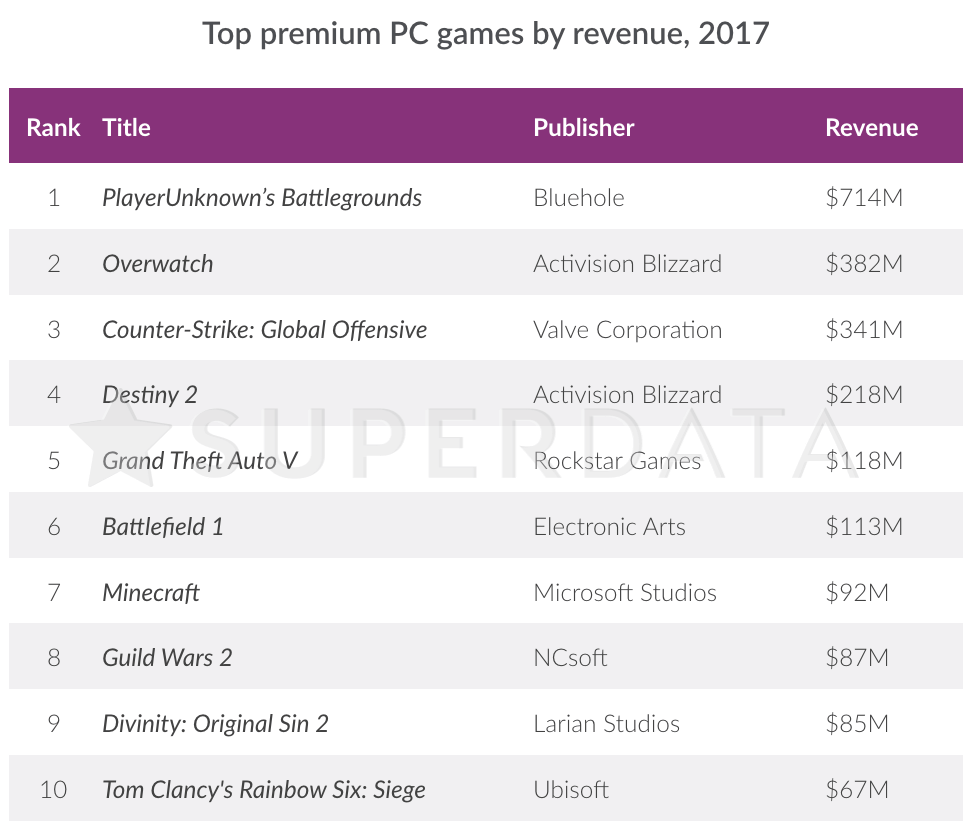SuperData Research has just released its 2017 Year in review digital games and interactive media report. According to the report, the mobile market has grown to $59.2B, PlayerUnknown Battlegrounds made $712M in eight months, YouTube’s gaming video content revenue plummeted by 50% and one in three people on the planet play free-to-play games.
Joost van Dreunen, CEO of SuperData Research, said:
“This year the games industry grew in nearly every category we measure. PlayerUnknown Battlegrounds is clearly the year’s big success story, with the game earning $332 million more than its second-place competitor, Overwatch. Esports also experienced significant audience and revenue growth, driven by the sustained success of huge titles like League of Legends. In all, the already-in-demand mobile and free-to-play markets continued to rise, while VR and esports made strides in entering the mainstream market.”
Here is a summary of 2017 Year In Review, Digital Games and Interactive Media report:
- One in three people on the planet (2.5B) play free-to-play games across PC and mobile platforms. Free-to-play games maintain their grip on the worldwide games market, generating $82B, or 89% across mobile and PC markets.
- Consumers spent $14B more on mobile games in 2017 than in 2016. Games such as Arena of Valor and Fantasy Westward Journey from Asian publishers like Tencent and NetEase contributed to a 31% year-over-year growth for the worldwide mobile market.
- Premium PC title PlayerUnknown’s Battlegrounds was 2017’s breakout success, generating $712M in revenue in just eight months. The title reinvigorated player interest in the battle royale genre, paving the way for similar games like Fortnite and Knives Out.
- Esports generated $756M in revenue and is on track to become a billion dollar business in 2018. Popular titles like League of Legendsand Overwatch helped esports attract a sizable audience of 258M unique viewers.
- Price cuts on virtual reality (VR) headsets and must-have content drove extended reality (XR) revenue up by 37% in 2017. Steep Oculus Rift price cuts boosted sales and allowed the headset to outsell HTC’s Vive during the year. In the console space, PlayStation VR enjoyed positive momentum as gamers jumped at the chance to play major game franchises like Resident Evil and The Elder Scrolls in VR.
Stephanie Llamas, VP of Research and Strategy and SuperData Research head of immersive technology insights, added:
“In 2017 we saw XR mature as consumer barriers started to chip away and content offerings became stronger. However, VR still has a ways to go to earn a larger share of the consumer market, as we saw more investor money go to augmented and mixed reality than VR last year.”
SuperData’s latest report also dives into the audience and viewing platforms for gaming video content (GVC):
- Despite having half the GVC audience of YouTube, Twitch’s audience is more engaged and willing to spend on their favorite broadcasters. Users on Twitch often support their favorite content creators directly through subscriptions and donations, which accounted for 51% of GVC revenue on the platform. In comparison, direct spending accounted for only 20% of YouTube’s GVC earnings, with the rest coming from advertising (69%) and sponsorships (11%).
- YouTube’s GVC revenue plummeted by 50% year-over-year after struggling with problematic content and monetization. Controversies surrounding uncensored, offensive content scared off advertisers. YouTube responded by implementing an algorithm that incorrectly demonetized unoffending videos. This in turn led to heavy backlash from its user base. Due to its poor handling of public relations, YouTube became a much less attractive destination for advertisers and and GVC content creators.
In addition to recapping 2017, the report includes projections for 2018, including the continued growth of the markets for mobile, free-to-play, esports and VR, and the prediction that the premium PC market will grow slightly in Asia and North America while falling in Europe.
Thomas is a close friend to John ‘john2’ and John ‘WhatGoesAroundComesAround’. Thomas, John and John basically came with the idea of DSOGaming. Thomas has been helping John with News articles these past years, and prefers to stay in the background than the foreground.




